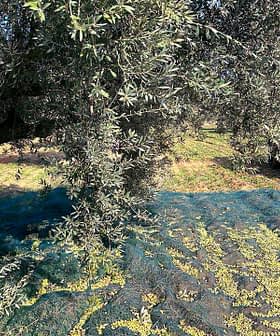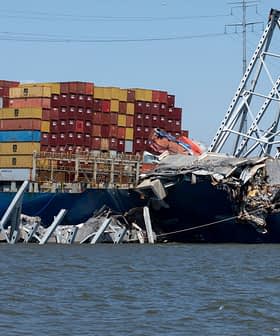EU Report Predicts 45 percent Increase in Olive Oil Exports by 2026
The report outlines the current state of the European Union's olive and olive oil sector and examines challenges and future prospects.
A new report by the European Parliamentary Research Service provides a comprehensive overview of the European Union’s olive and olive oil sector as well as the current challenges it faces and future prospects.
The European Union is the world’s largest olive oil producer, with 70 to 75 percent of the world’s olive oil supply originating in nine countries: Spain, Italy, Greece, Portugal, France, Croatia, Slovenia, Cyprus and Malta. According to the report, plantations in the EU’s olive-growing regions cover a total area of 5 million hectares with a production value of over €7 billion.
The report shares a few interesting facts and figures about olive oil production in the EU:
- More than half of the EU’s 5 million hectares of olive plantations are found in Spain.
- Greece is the only EU country where more than 10 percent of olive groves are reserved for table olives.
- The largest olive farms are in Spain, Italy, Greece and Portugal.
- Spain has the largest olive plantations averaging 5.8 hectares in size, followed by Portugal at 2.8 hectares. In other countries, the average plantation size is 2 hectares.
- 35 percent of Spain’s farm workers work on olive plantations.
- Most olive farms are small and family-run, with less than 1 percent of workers being non-family members. In Spain, this percentage is 17 percent.
- Olive and olive oil production made up over 15 percent of agricultural output in Greece and Spain in 2016.
- Yields average between 2,000 and 2,500 tons per hectare. Spain and Italy tend to experience higher yields but trends indicate that these are increasing in Spain and Portugal while declining in Italy and other countries.
- In 2016, 74 percent of the EU’s olive oil was produced in Spain while a further 22 percent was divided almost equally between Greece and Italy.
- The price of table olives has been steadily increasing and ranges from less than €60 per 100 kg in Portugal and Malta to more than €200 in Greece in 2016.
- The price of extra virgin olive oil ranges from more than €300 per 100 liters in Spain, Greece and Portugal, to more than €500 in Italy in 2015. Prices in Croatia and Slovenia are up to 100 percent more expensive.
- Most EU exports of olive oil are headed for the USA, Japan, China, Canada, Brazil and Australia.
- Most imports come from Tunisia, Morocco and Syria and are headed to Spain and Italy.
- Italy is the highest importer of olive oil within the EU, with most imports coming from Spain.
The report also outlines a few of the main challenges faced by the EU’s olive sector. It notes that while production processes remain largely traditional, in Spain and Portugal there’s a trend towards increasing the size of plantations and introducing mechanization. A Spanish research study concluded that this approach is not a “one-size fits all solution” and suggests that plantations could increase profits and avoid market volatility by focusing on innovative harvesting solutions, new cultivars, and pest management.
© Olive Oil Times | Data source: International Olive Council
Market fluctuations due to the unpredictability of yields, extreme weather and disease were some of the biggest challenges faced by countries in the EU’s olive-growing region in recent years. An attempt is being made to address these issues through the risk-management instruments available to farmers under the EU’s Common Agricultural Policy (CAP), while other initiatives aim to tackle food fraud and disputes on the application of commercial rules, and strengthen competitivity.
Looking to the future, the report forecasts that EU production is set to rise, especially in Spain where it is projected to increase by 10 percent by 2026, while Italy is expected to see a decline of one percent. Meanwhile, in terms of international trade, exports are predicted to rise over 45 percent by 2026.
In order to reach these goals, financing is being dedicated to research into improving several aspects of the production chain, including sustainability and pest control, preventing fraud, and the recycling of waste.
The full report is available here.








